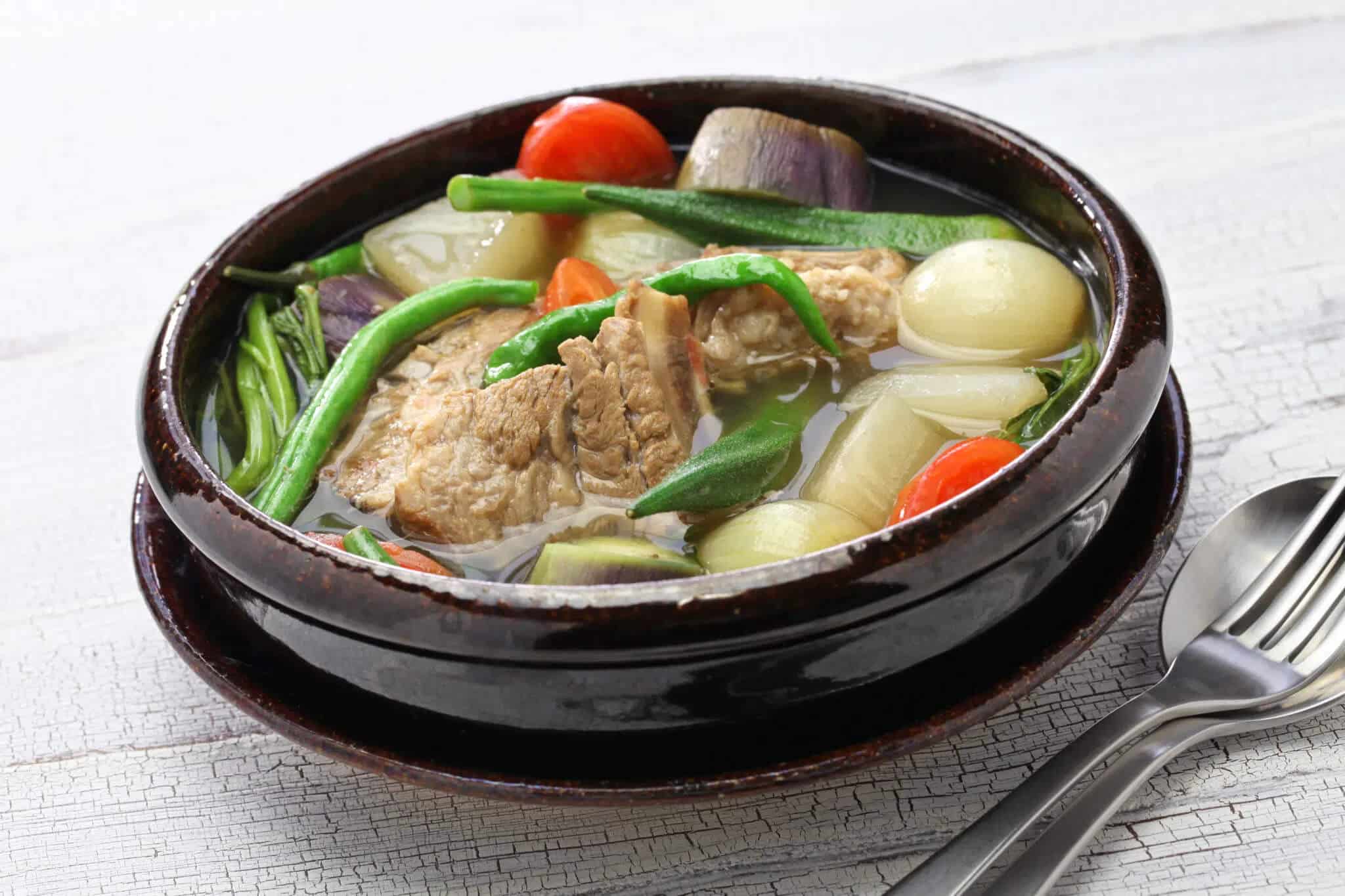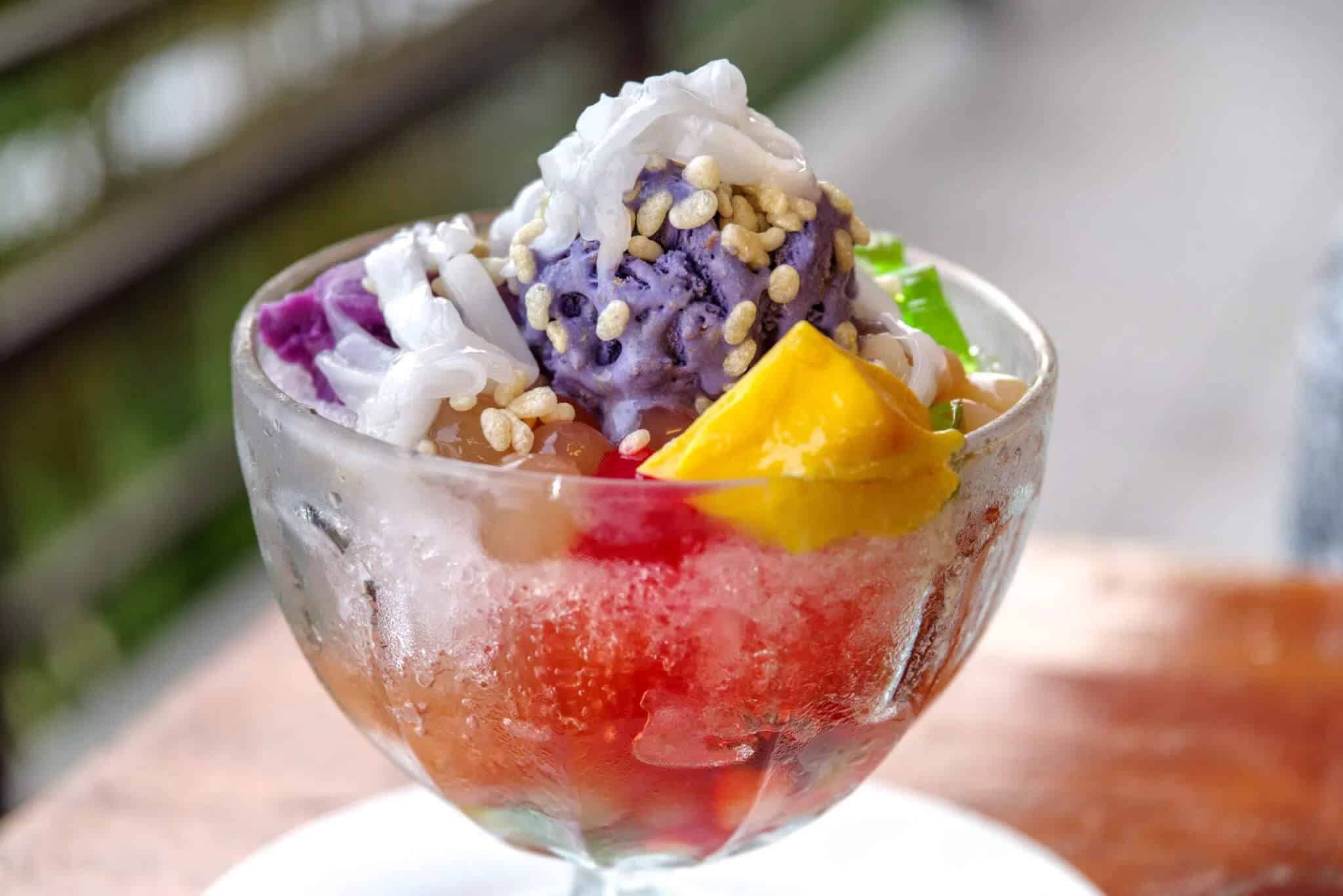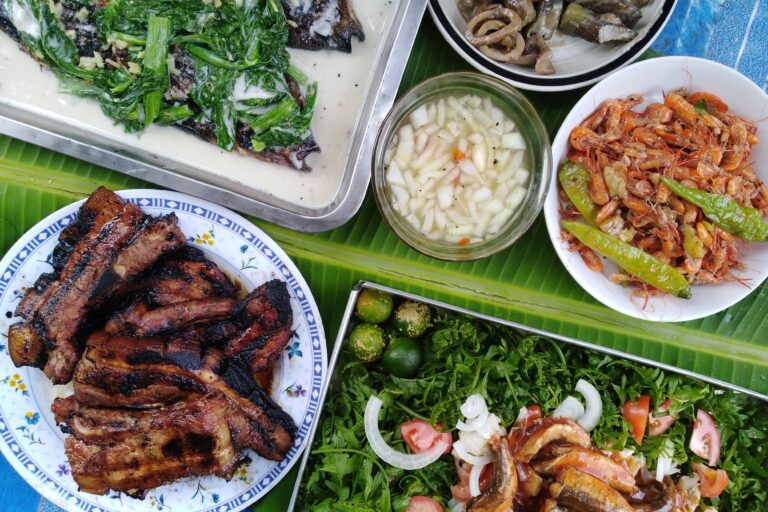Millions of Filipinos like me have left the Philippines to work and live, often as Overseas Foreign Workers (OFW) or seafarers. If you have Filipino friends, then you’ve probably seen their love for recreating these popular Filipino foods abroad. As with any culture, their traditional family cuisine is part of who they are.
Read on to learn about popular Filipino foods you can try the next time you’re in a Filipino restaurant or want something new to make at home.
What is Filipino cuisine?
Filipino cuisine is as diverse as the 7,100-plus islands that make up the archipelago.
The food of the Philippines combines the influences of Spain, China, and India with local flavor to create unique and delicious dishes.
Although it shares some ingredients with other Asian cuisines—such as coconut milk, taro, and fish sauce—it has plenty of unique flavors of its own.
From the mild and familiar adobo to the more adventurous dinuguan, there is a Filipino dish for all types of palettes.
12 popular Filipino foods you’ll want to try

Filipino food is becoming more and more popular outside of the archipelago, especially as many Filipinos immigrate to Canada and the U.S.
From Historic Filipinotown in Los Angeles to Little Manila in Toronto, chefs and restaurateurs are making a name for these classic Filipino dishes and side dishes.
1. Filipino adobo

Every Filipino knows what adobo is, and lately, this dish has been making waves in the international scene as chefs present their culinary twist on the classic. Adobo is tangy, sweet chicken, pork, or beef best served on top of a steaming bowl of white rice.
Adobo comes from the Spanish word “adobar,” which basically means “to marinate.” But Philippine adobo is nothing like its Spanish or Mexican counterpart. In Philippine adobo, the marinade usually consists of soy sauce, vinegar, bay leaves, and peppercorn.
The most popular types of meat to use for marinating are chicken and pork. But you can also cook this dish with squid, banana hearts, or water spinach in the adobo style.
2. Batchoy

Batchoy is a warm, hearty noodle dish that’s basically the Philippines’ answer to Japan’s ramen. One version, called La Paz batchoy, consists of thin, firm egg noodles in a clear bone broth topped with a generous amount of chicharon (crunchy pork rinds), meat, innards, small thin slices of liver, and green onion leaves.
You can choose to add raw egg if you want. Eat it with puto manapla (rice cakes from a town in Iloilo called Manapla) for a more authentic experience.
Another version of this dish, called batchoy tagalog, uses a Chinese vermicelli noodle called misua and has plenty of ginger in the broth.
3. Lechon
No party, or fiesta, is complete without lechon. Lechon is a whole pig spit-roasted over coals until its skin turns golden-brown and crispy.
There are many different ways to prepare lechon, and all of them are equally delicious. In Luzon, it’s usually cooked without seasoning and served with liver sauce.
In Cebu, on the other hand, it’s more common for cooks to salt the pig and stuff it with star anise, spring onions, laurel leaves, and lemongrass. The recipe makes for a very flavorful lechon, which needs no dipping sauce.
4. Kare-kare
Kare-kare is a rich orange stew, usually made with oxtail simmered in peanut sauce for special occasions. It also contains a variety of vegetables, such as green string beans, eggplant, and Chinese chard.
Kare-kare is almost always served with a side of bagoong (fermented shrimp paste), but this is an acquired taste, so you’re welcome to eat kare-kare without it.
5. Sinigang

Sinigang is a classic Filipino dish that you need to try at least once. It’s a soup that has a sour broth made out of tamarind and kamias, or tree cucumber in English.
Sinigang is full of vegetables such as leafy greens, okra, and tomatoes. You can choose to add pork, shrimp, or fish, and eat sinigang by itself or with white rice. This dish is not to be confused with sinangag, which is a type of Filipino garlic fried rice.
6. Crispy pata
Crispy pata is deep-fried pork leg that’s usually served on special occasions. Crunchy on the outside and moist, soft, and chewy on the inside, it’s especially delicious with a dipping sauce of vinegar infused with garlic, onions, and chili pepper.
7. Kinilaw
The Philippines has an abundance of fresh fish, and Filipinos have raised the bar for cooking fish in a variety of ways, from frying to grilling.
However, some say nothing comes close to local kinilaw, or vinegar-cooked fish. This is the Filipino version of ceviche, a raw fish dish that’s often served as an appetizer.
Filipino kinilaw has many different permutations and can be as simple as putting a vinegar dressing over sliced raw fish. You can also find people experimenting with kinilaw by adding soy sauce, calamansi juice, or bits of pork belly and shrimp.
8. Dinuguan

The Polish have czernina, the British have blood sausage, and Filipinos have dinuguan.
If you’re an adventurous eater, you’ll want to try this dish, which is made of pork stewed in fresh pig blood with vinegar and seasoned with garlic, onion, chili, and other spices.
This comfort food is best with puto (rice cakes) or on top of steamed rice.
9. Sisig
Filipinos usually eat sisig served on a hot stone plate, as a pulutan (beer food) when out drinking. Sisig consists of chopped pig’s face that’s boiled until tender, then sautéed with onions and chili.
Some people like to add mayonnaise or raw egg on top to give the dish a creamier texture. If sizzling pig’s face is not something you want to eat, you can try a non-traditional version made with tuna or tofu.
10. Bacolod inasal
There’s roast or grilled chicken, and then there’s chicken inasal, also called Bacolod inasal after the city where it originated.
Chicken inasal consists of chicken marinated in calamansi, lemongrass, tuba (local vinegar), and ginger. As it cooks on hot coals, it’s basted with annatto oil, giving it an orange appearance.
11. Balut
No list of Filipino food is complete without balut. Visitors to the Philippines go out of their way to eat this common street food as a rite of passage.
Balut is basically a fertilized duck egg. The embryo develops in the egg for 16 days (and no more than 18 days) before it’s cooked. If the thought of eating a fertilized duck egg is unappealing to you, you can go with balut penoy, which is just a boiled duck egg.
12. Halo-halo

Halo-halo is a popular Filipino dessert. It translates to “mix mix” and consists of shaved ice with kaong (sugar palm), banana, gelatin, beans, halaya (purple yam), macapuno (sticky coconut strips), sago, and whatever fruit is in season.
This treat is almost always topped with ube ice cream, leche flan, and either condensed or evaporated milk. In the heat of summer, halo-halo is heaven in a cup.
Filipino food is all about family
Whether you’re in the mood for a classic Filipino breakfast of tapsilog or flavorful street food like lumpia (spring rolls), these popular Filipino foods offer something for everyone.
Arroz caldo (rice porridge), kaldereta (a beef stew with tomato sauce), and pancit (a traditional noodle dish with bell peppers) are also worth a try.
Filipino food is all about family, and overseas Filipinos never forget the taste of their homeland and the people they left behind. Many Filipinos send money back to the Philippines as a gesture of love to their families.
